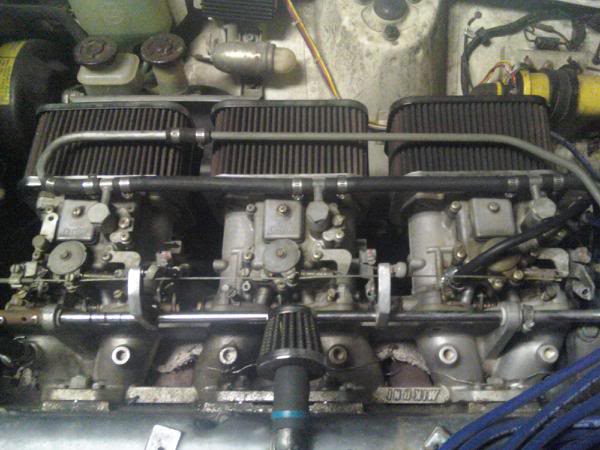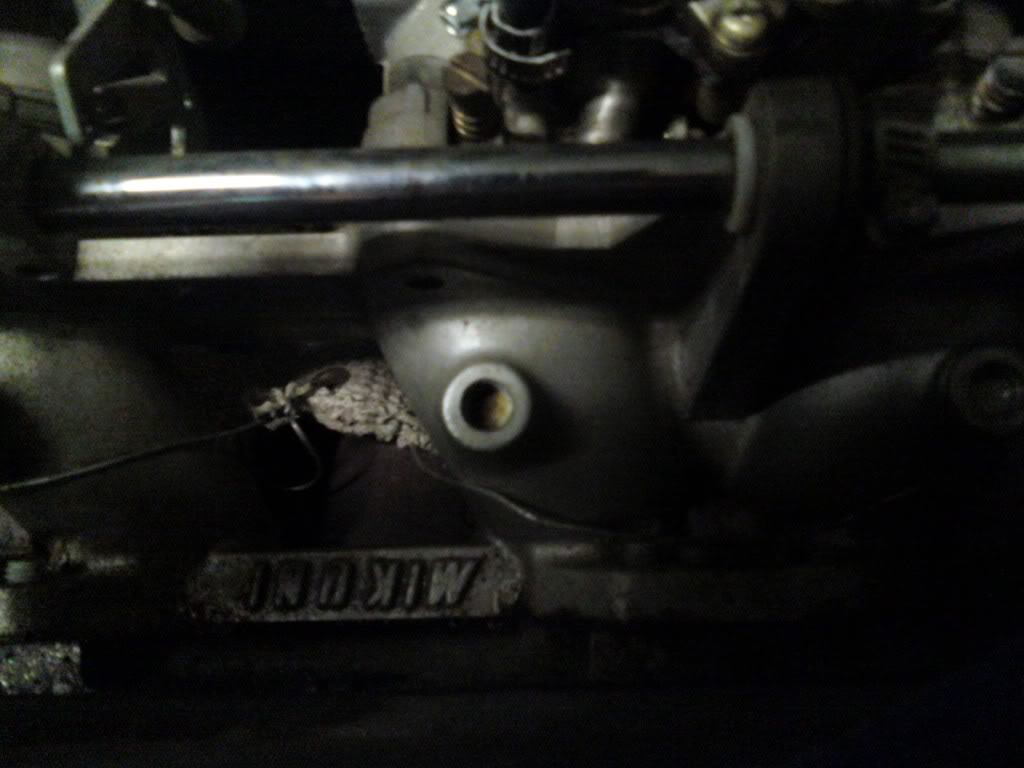Mikuni vacuum connections:
#1
Mikuni vacuum connections:
I've searched three different forums and can't find an answer.
I'm working on sync'ing or balance my triple Mikuni carbs. I've done this several times on motorcycles with just a vacuum gauge with great success. I know it's not a Unisyn or similar, but patience yields just as good results.
The vacuum advance for the dizzy is connected to #1 carb.
The middle carb doesn't have anything, and I can't get a vacuum reading on the port.
Third carb, can't get a reading.
I'm trying to connect to the same place the advance tube is connected to on the #1 carb, but I don't have the tall nipple like on the #1 carb.
What am I doing wrong?
Thanks!
JM
I'm working on sync'ing or balance my triple Mikuni carbs. I've done this several times on motorcycles with just a vacuum gauge with great success. I know it's not a Unisyn or similar, but patience yields just as good results.
The vacuum advance for the dizzy is connected to #1 carb.
The middle carb doesn't have anything, and I can't get a vacuum reading on the port.
Third carb, can't get a reading.
I'm trying to connect to the same place the advance tube is connected to on the #1 carb, but I don't have the tall nipple like on the #1 carb.
What am I doing wrong?
Thanks!
JM
#2
On closer inspection, I removed some hex screws from the Mikuni manifold, and I found that I did have access to the intake runners. However, they are blocked with some type of semi-firm sealant material. It's soft enough I can press a knife tip into it. Is this normal, or did someone do this to prevent vacuum leaks?
One pic shows overall, I have the allen screws out, but you can't really tell much about them.

Closer pic - turns out it's not solid, it's a white-ish sealant looking material, but very stiff. I can get the tip of a knife blade to dig in.

JM
One pic shows overall, I have the allen screws out, but you can't really tell much about them.

Closer pic - turns out it's not solid, it's a white-ish sealant looking material, but very stiff. I can get the tip of a knife blade to dig in.

JM
#4
The round opening with the white stuff inside in the intake runner was what I was asking about. I did know that is a heat shield to keep from boiling the fuel in my carbs.
I'm wanting to know if I can remove the sealant from the threaded holes in the intake runners and take a vacuum reading there and re-seal.
JM
#5
I've done both of those. My timing is 10 or 12 degrees at idle, and advances as I bring RPM up.
The round opening with the white stuff inside in the intake runner was what I was asking about. I did know that is a heat shield to keep from boiling the fuel in my carbs.
I'm wanting to know if I can remove the sealant from the threaded holes in the intake runners and take a vacuum reading there and re-seal.
JM
The round opening with the white stuff inside in the intake runner was what I was asking about. I did know that is a heat shield to keep from boiling the fuel in my carbs.
I'm wanting to know if I can remove the sealant from the threaded holes in the intake runners and take a vacuum reading there and re-seal.
JM
Last edited by theramz; 09-21-2011 at 08:22 AM.
Thread
Thread Starter
Forum
Replies
Last Post
texasz
FS: 240Z,260Z,280Z & 280ZX (70-83)
1
02-05-2006 04:28 PM
Bookmarks















